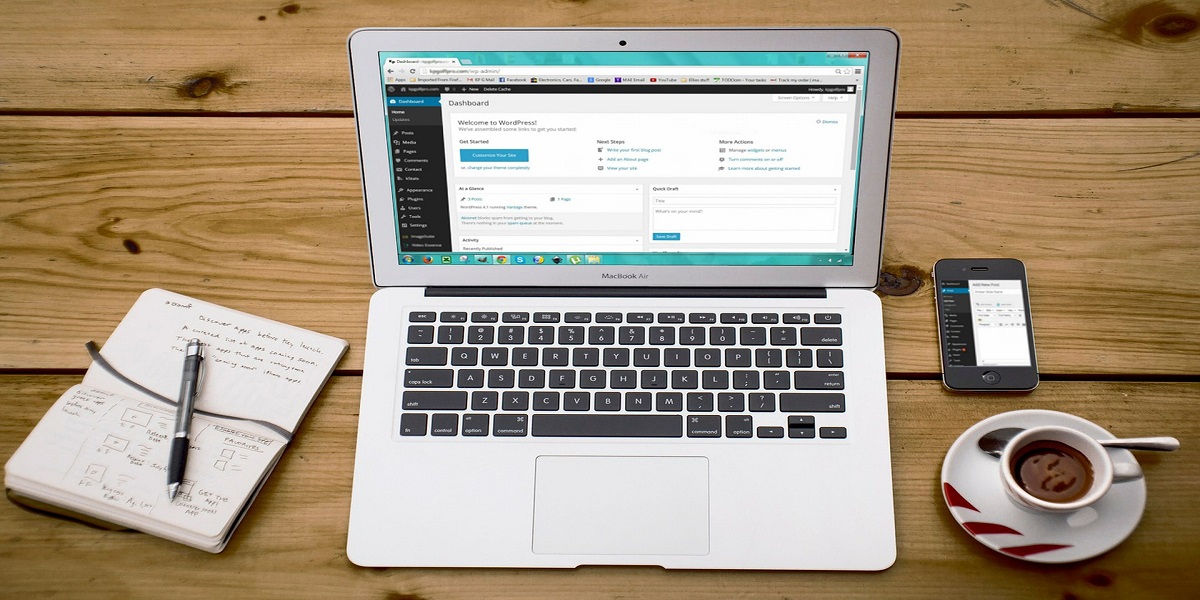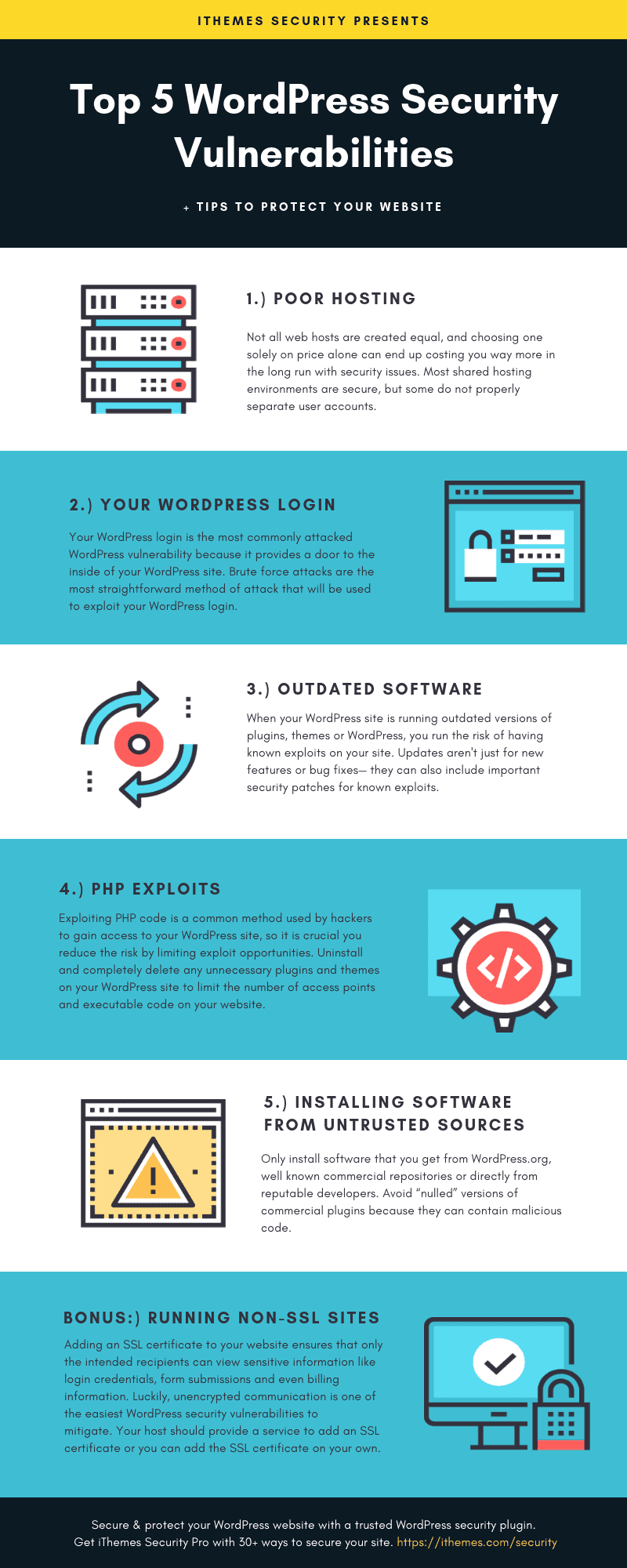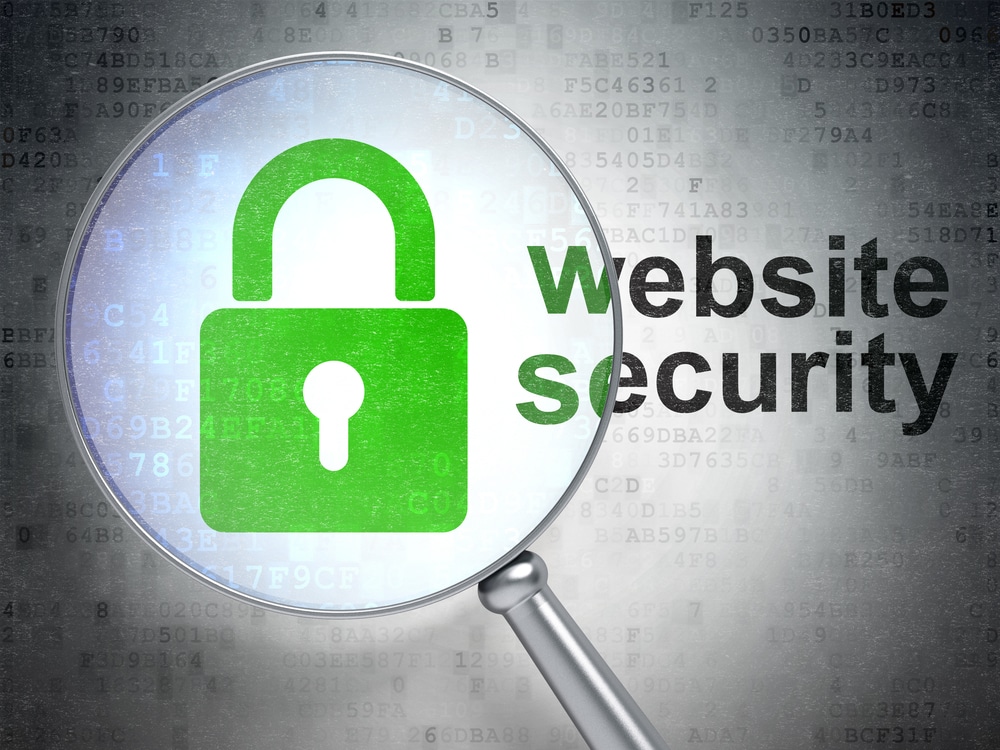WordPress security vulnerabilities include outdated plugins, weak passwords, and lack of SSL. Fix them by updating, using strong passwords, and enabling SSL.
WordPress, as one of the most popular website platforms, is often targeted by hackers. Understanding common security vulnerabilities and how to fix them is crucial. Outdated plugins and themes can be easy entry points for attackers. Weak passwords are easily guessed, compromising site security.
Lack of SSL certificates can expose data to interception. By staying proactive and following best practices, you can protect your WordPress site effectively. Regular updates, strong passwords, and SSL certificates are essential. Ensuring these measures are in place can safeguard your site from potential threats and keep it running smoothly.
Outdated Plugins And Themes
Outdated plugins and themes pose a significant security risk. They can be gateways for hackers to exploit. Regular updates ensure your site is secure and functions well.
Risks Of Using Outdated Software
Using outdated plugins and themes can lead to several issues. The most critical risks include:
- Security vulnerabilities: Hackers exploit old code.
- Compatibility issues: Old plugins may not work with new WordPress versions.
- Loss of features: New updates often add useful features.
| Risk | Description |
|---|---|
| Security Vulnerabilities | Hackers can exploit outdated code. |
| Compatibility Issues | Old plugins may break with new WordPress versions. |
| Loss of Features | New updates often bring useful features. |
Steps To Update Plugins And Themes
Updating plugins and themes is crucial for site security. Follow these steps:
- Log in to your WordPress dashboard.
- Navigate to the Plugins section.
- Check for available updates under each plugin.
- Click Update Now for each plugin with updates.
- Navigate to the Themes section.
- Check for available updates under each theme.
- Click Update Now for each theme with updates.
Make sure to back up your site before updating. This prevents data loss in case something goes wrong.

Weak Passwords
One of the most common WordPress security vulnerabilities is weak passwords. Many users often underestimate the importance of strong passwords. This negligence can lead to severe security breaches. In this section, we’ll explore the dangers of weak passwords and how to create strong ones.
Dangers Of Weak Passwords
Weak passwords make it easy for hackers to access your site. They can use brute force attacks to guess your password. Simple passwords like “123456” or “password” are easy targets. Hackers can gain control of your site quickly. This can lead to data loss, stolen information, and damaged reputation.
Weak passwords also put your personal information at risk. Hackers can steal your email, address, and other sensitive data. This can lead to identity theft and financial loss. Protecting your WordPress site with strong passwords is crucial.
Creating Strong Passwords
Creating strong passwords is essential for your site’s security. Use a combination of letters, numbers, and special characters. A good password should be at least 12 characters long. Avoid using easily guessable information like your name or birthdate.
| Weak Password | Strong Password |
|---|---|
| 123456 | G7$hP!9Qw3 |
| password | Yt8Jm!5Pq#4 |
| qwerty | Wp$7!Km^9@1 |
Here are some tips for creating strong passwords:
- Use a mix of uppercase and lowercase letters.
- Include numbers and special characters.
- Avoid using common words or sequences.
- Consider using a password manager to generate and store passwords.
Strong passwords are your first line of defense against hackers. Ensure all users on your WordPress site follow these guidelines. Protect your site by prioritizing strong passwords.
Unprotected Wp-config.php
The wp-config.php file is one of the most important files in your WordPress installation. It contains sensitive information about your database, including login credentials and important settings. Leaving this file unprotected makes your website vulnerable to attacks. Securing this file should be a top priority.
Importance Of Wp-config.php
The wp-config.php file holds the keys to your WordPress kingdom. It stores your database connection details, secret keys, and various other settings that determine how your site functions. If this file is compromised, attackers can gain full control of your site.
Here are some critical details stored in wp-config.php:
- Database name
- Database username
- Database password
- Authentication keys and salts
How To Secure Wp-config.php
Securing the wp-config.php file is crucial for your website’s safety. Here are some steps you can follow:
- Move wp-config.php – Move this file to a non-web accessible directory.
- Restrict File Permissions – Set the permissions to 600 using the command:
chmod 600 wp-config.php - Block Access via .htaccess – Add the following code to your .htaccess file:
order allow,deny deny from all
Following these steps ensures your wp-config.php file is secure. A secure wp-config.php file protects your website from unauthorized access.
Sql Injection
SQL Injection is a serious security threat to WordPress sites. It allows attackers to interfere with the queries an application makes to its database. This can lead to unauthorized access, data theft, and even full system compromise. Understanding how SQL Injection works and knowing how to prevent it is crucial.
How Sql Injection Works
SQL Injection occurs when an attacker inserts malicious SQL code into an input field. This can manipulate the database and execute unauthorized commands. For example, if a login form does not validate user input, an attacker can input SQL code instead of a username. This can trick the database into revealing sensitive information.
Here is a simple example of vulnerable code:
$user_input = $_GET['username'];
$query = "SELECT FROM users WHERE username = '$user_input'";
In this example, an attacker could input ' OR '1'='1 as the username. The resulting query would look like:
SELECT FROM users WHERE username = '' OR '1'='1';
This query returns all users because '1'='1' is always true.
Preventing Sql Injection Attacks
To prevent SQL Injection, always sanitize and validate user inputs. Use prepared statements and parameterized queries. These methods ensure that user input is treated as data, not executable code.
Here is an example of secure code using prepared statements:
$statement = $pdo->prepare("SELECT FROM users WHERE username = :username");
$statement->execute([':username' => $user_input]);
In this example, the user input is passed as a parameter. This prevents it from being interpreted as SQL code.
- Sanitize inputs: Remove special characters from user inputs.
- Validate inputs: Ensure inputs meet expected formats and types.
- Use prepared statements: Always use prepared statements for database queries.
- Limit database permissions: Only grant necessary permissions to database users.
Another effective method is using a Web Application Firewall (WAF). A WAF can detect and block SQL Injection attempts before they reach your application.
Regularly update your WordPress plugins and themes. Outdated software can have vulnerabilities that SQL Injection attacks exploit. Keeping everything up-to-date reduces the risk.
| Action | Description |
|---|---|
| Sanitize Inputs | Remove special characters from user inputs. |
| Validate Inputs | Ensure inputs meet expected formats and types. |
| Use Prepared Statements | Pass user inputs as parameters in queries. |
| Limit Database Permissions | Only grant necessary permissions to database users. |
| Update Plugins and Themes | Regularly update software to patch vulnerabilities. |
File Permissions
File permissions are crucial for maintaining the security of your WordPress site. They control who can read, write, or execute files on your server. Incorrect file permissions can lead to unauthorized access and potential data breaches.
Risks Of Incorrect File Permissions
Incorrect file permissions can expose your site to various risks:
- Unauthorized Access: Hackers can read or modify sensitive files.
- Malware Injection: Malicious scripts can be uploaded and executed.
- Data Theft: Confidential data can be stolen or altered.
- Site Defacement: Attackers can change your website’s content.
- Service Disruption: Critical files can be deleted, causing site downtime.
Setting Proper File Permissions
Setting the right file permissions is essential. Follow these steps to secure your WordPress files:
- Connect to your server using an FTP client or file manager.
- Locate the WordPress installation directory.
- Set permissions for files and directories using the following guidelines:
| Item | Permission |
|---|---|
| Files | 644 (readable by everyone, writable by the owner) |
| Directories | 755 (executable by everyone, writable by the owner) |
| wp-config.php | 440 or 400 (readable only by the owner) |
To change file permissions, use the chmod command. Here’s an example:
chmod 644 wp-config.phpRegularly check and update your file permissions to maintain security. Automated tools and plugins can help manage permissions efficiently.

Malware And Backdoors
WordPress websites often face security threats like malware and backdoors. These threats can compromise your site’s safety and user data. Protecting your website from these vulnerabilities is crucial.
Identifying Malware
Malware can hide in your WordPress site’s files. It can steal data, send spam, or create more backdoors. To find malware:
- Use security plugins like Wordfence or Sucuri.
- Check your server logs for suspicious activity.
- Look for unexpected changes in files or directories.
Removing Malware And Backdoors
Once you identify malware, you must remove it quickly. Follow these steps:
- Backup your website to avoid data loss.
- Deactivate all plugins and themes.
- Use security plugins to scan and remove malware.
- Manually check your
wp-config.phpand.htaccessfiles for suspicious code. - Update WordPress, themes, and plugins to their latest versions.
It’s also important to secure your site from future attacks:
| Action | Benefit |
|---|---|
| Install a firewall plugin | Blocks malicious traffic |
| Use strong passwords | Prevents unauthorized access |
| Enable two-factor authentication | Adds an extra security layer |

Frequently Asked Questions
What Are Common WordPress Security Vulnerabilities?
Common vulnerabilities include outdated plugins, weak passwords, unpatched themes, unsecured hosting, and lack of SSL. Regular updates and security plugins help.
How Can I Secure My WordPress Login?
Use strong passwords, enable two-factor authentication, and limit login attempts. Regularly update your login credentials.
Why Are Outdated Plugins A Security Risk?
Outdated plugins can have unpatched vulnerabilities. Always update plugins to the latest versions to ensure security.
How Do I Protect My WordPress Site From Brute Force Attacks?
Implement two-factor authentication, use strong passwords, and limit login attempts to safeguard against brute force attacks.
Conclusion
Safeguarding your WordPress site is essential. Addressing these common vulnerabilities enhances security and user trust. Regular updates, strong passwords, and reliable plugins are key. Stay vigilant, and your website will remain secure. Implement these fixes and enjoy a safer online presence.
Protect your site, protect your business.
